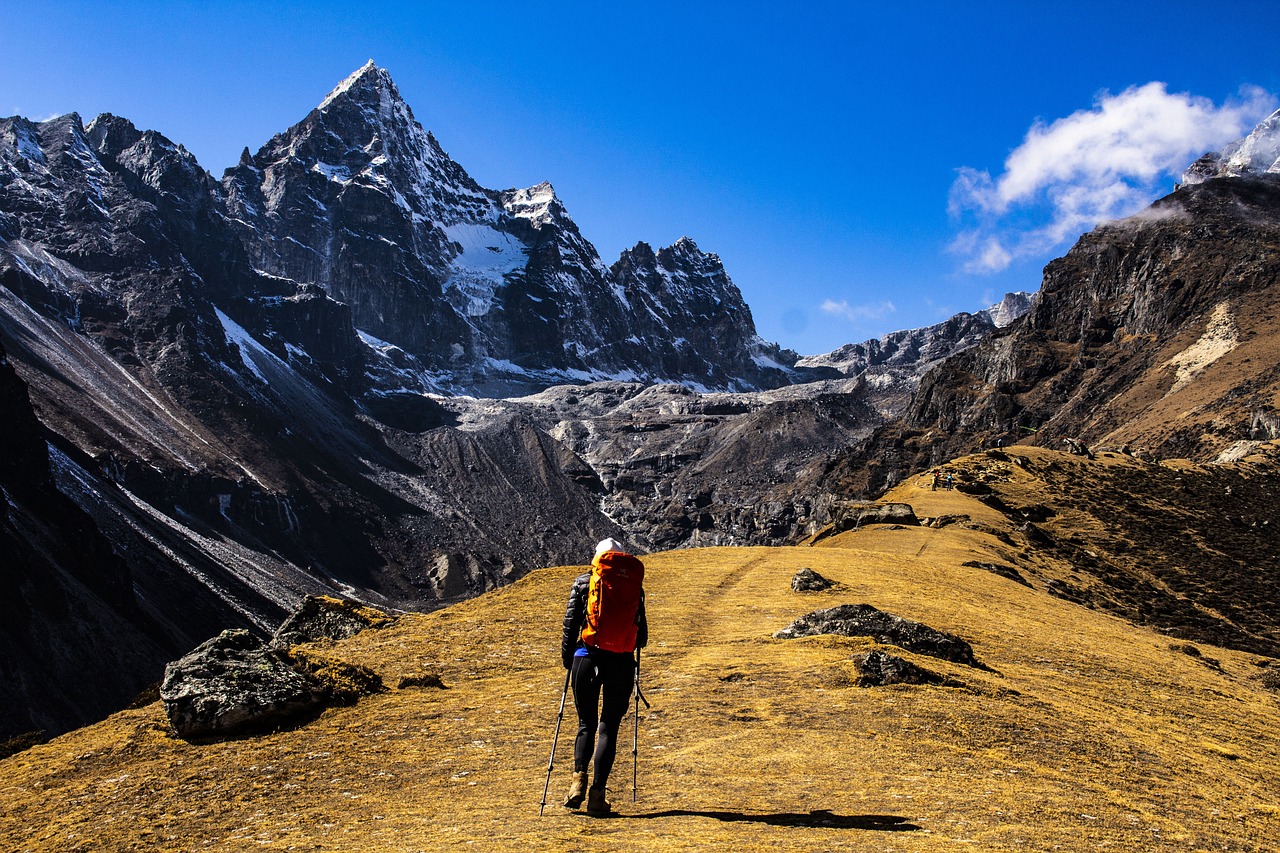In the realm of adventure travel, few experiences rival the awe-inspiring journey to the foot of the world’s tallest peak—Mount Everest. The Everest Base Camp Trek, a legendary expedition that winds its way through the heart of the Himalayas, is a bucket-list-worthy adventure that promises breathtaking landscapes, cultural immersion, and a profound sense of accomplishment. Join us as we embark on this epic odyssey—a journey of discovery, perseverance, and unparalleled natural beauty.
The Call of the Himalayas
Nestled in the heart of the Khumbu region of Nepal, Everest Base Camp serves as the launching point for mountaineers aiming to summit the iconic peak. But for many trekkers, the journey to Base Camp itself is the ultimate challenge and reward—a chance to witness the majesty of Everest up close and personal, without the need for technical climbing skills.
The allure of the Everest Base Camp Trek lies not only in its stunning mountain vistas but also in its cultural immersion. Along the trail, trekkers encounter traditional Sherpa villages, ancient monasteries, and vibrant prayer flags that flutter in the mountain breeze. It’s a journey that transcends the physical realm and delves deep into the soul of the Himalayas.
Trekking Through Time and Terrain
The Everest Base Camp Trek typically begins with a flight from Kathmandu to Lukla, a small mountain town nestled in the foothills of the Himalayas. From there, trekkers embark on a multi-day journey that takes them through a variety of landscapes, from lush rhododendron forests to rugged alpine terrain.
Along the way, trekkers pass through charming Sherpa villages such as Namche Bazaar, the bustling trading hub of the Khumbu region. Here, they have the opportunity to immerse themselves in Sherpa culture, sample local cuisine, and shop for handmade crafts and souvenirs.
As the trail ascends higher into the mountains, trekkers are treated to increasingly spectacular views of snow-capped peaks, including Everest, Lhotse, and Ama Dablam. Each day brings new challenges and rewards, from navigating steep mountain passes to acclimatizing to the thin air of high altitude.
Sherpa Hospitality and Culture
One of the highlights of the Everest Base Camp Trek is the opportunity to interact with the legendary Sherpa people, renowned for their strength, resilience, and hospitality. Sherpas have called the Khumbu region home for centuries, and their intimate knowledge of the mountains makes them invaluable guides and companions on the trek.
Throughout the journey, trekkers are welcomed into Sherpa homes and teahouses, where they are treated to warm hospitality and hearty meals. Sherpa cuisine, which features staples such as dal bhat (lentil soup with rice), momos (steamed dumplings), and tsampa (roasted barley flour), provides the perfect fuel for long days on the trail.
Trekkers also have the opportunity to visit ancient monasteries and gompas, where they can witness traditional Buddhist rituals and ceremonies. The sound of chanting monks and the aroma of burning juniper incense create an atmosphere of serenity and spirituality that is truly unforgettable.
Conquering Everest Base Camp
After days of trekking through some of the most rugged and remote terrain on Earth, trekkers finally arrive at Everest Base Camp—a barren expanse of glacial moraine at the foot of the Khumbu Icefall. Here, they are rewarded with panoramic views of Everest’s towering summit, as well as the surrounding peaks of the Himalayas.
For many trekkers, reaching Everest Base Camp is the culmination of a lifelong dream—a testament to their determination, perseverance, and spirit of adventure. Standing in the shadow of the world’s tallest peak, they are filled with a sense of awe and wonder at the sheer magnitude of the natural world.
Practical Tips for the Everest Base Camp Trek
Before embarking on the Everest Base Camp Trek, it’s important to be prepared both mentally and physically for the challenges that lie ahead. Here are some practical tips to help you make the most of your adventure:
- Train and Prepare: The Everest Base Camp Trek is physically demanding, requiring stamina, endurance, and strength. Be sure to train adequately in the months leading up to your trek, focusing on cardiovascular fitness and leg strength.
- Pack Light: When packing for the trek, remember that you’ll be carrying your own gear for long distances each day. Pack only the essentials, and invest in high-quality, lightweight equipment to minimize your load.
- Stay Hydrated and Well-Fed: Proper nutrition and hydration are essential for maintaining energy levels and avoiding altitude sickness. Drink plenty of water throughout the day, and fuel your body with nutritious meals and snacks.
- Acclimatize Gradually: As you ascend higher into the mountains, it’s important to acclimatize slowly to the thin air of high altitude. Take rest days as needed, and listen to your body’s cues to avoid overexertion.
- Respect the Environment and Culture: Remember to tread lightly on the fragile mountain ecosystem and respect the customs and traditions of the Sherpa people. Leave no trace, and take care to preserve the natural beauty of the Himalayas for future generations.
Conclusion: A Journey of a Lifetime
The Everest Base Camp Trek is not merely a physical challenge—it’s a journey of self-discovery, cultural immersion, and profound connection to the natural world. From the rugged beauty of the Himalayan landscape to the warmth and hospitality of the Sherpa people, every step of the trek offers new insights and experiences that will stay with you long after you return home.
So lace up your boots, pack your sense of adventure, and prepare to embark on the journey of a lifetime. The trails of the Everest Base Camp Trek await, ready to lead you to the roof of the world and beyond.


